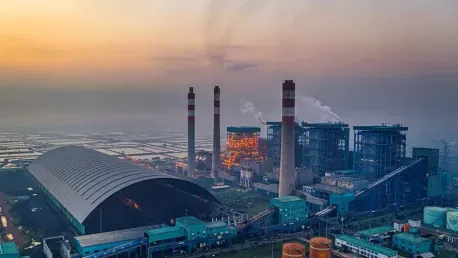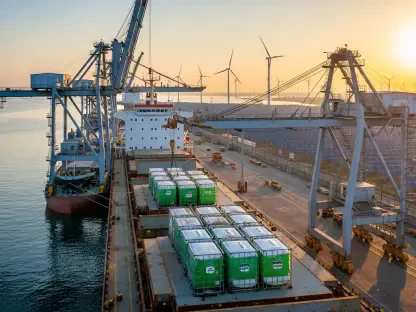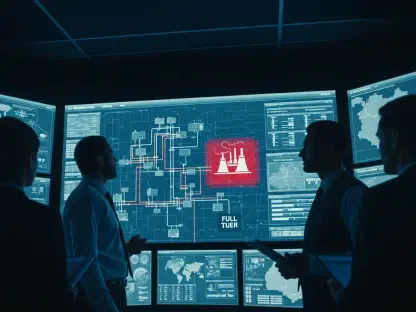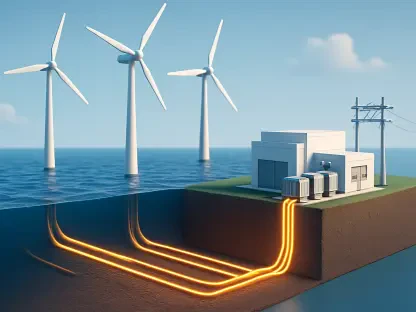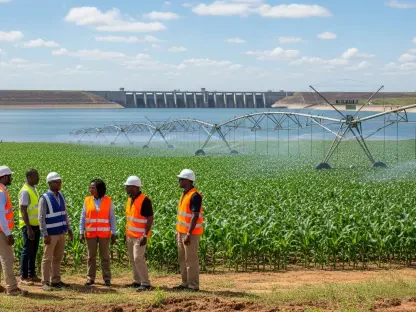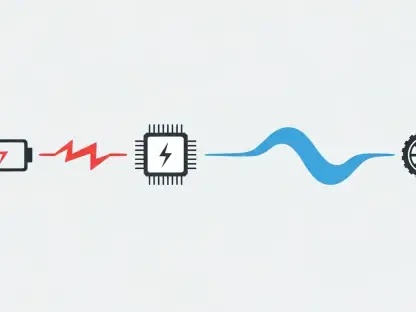The 45V tax credit provides an exciting opportunity for the hydrogen industry to advance clean energy initiatives and reduce industrial pollution. Spearheaded by the Inflation Reduction Act (IRA), this incentive aims to foster the integration of low-carbon hydrogen into energy systems. However, achieving compliance with the 45V credit is a multifaceted challenge that requires careful planning and execution. Developers must navigate stringent emission thresholds while using grid-connected electricity, making the process complex and nuanced. This article delves into the core strategies and considerations that developers need to ensure compliance with the 45V credit, detailing the structures and systems necessary for successful implementation.
The Critical Role of the 45V Credit
The 45V hydrogen production credit is central to the broader agenda of reducing industrial emissions. As an integral part of the IRA, it incentivizes the use of clean hydrogen in heavy industries which are typically challenging to decarbonize. The credit not only reduces emissions but also stimulates the clean hydrogen market, making it an indispensable tool for sustainable development. However, the aims of the 45V credit come with stringent compliance requirements, particularly concerning the use of grid-connected electricity. Developers must prove that hydrogen is produced using electricity derived from renewable sources, presenting significant logistical and operational challenges.
The role of the 45V credit is not just limited to offering financial incentives but also to systemic improvements. It addresses the critical need to promote clean hydrogen in industrial applications that have traditionally struggled with high carbon footprints. By leveraging the 45V credit, developers can ensure that their projects not only meet the eco-friendly criteria but also gain a competitive edge in an evolving marketplace. The challenge remains in synchronizing hydrogen production processes with the availability of renewable energy, requiring developers to devise robust operational frameworks and adopt innovative solutions.
Overcoming Challenges with Grid-Connected Projects
One of the primary challenges developers face is building grid-connected hydrogen production projects that align with the low-carbon emissions criteria stipulated by the 45V credit. The complexity arises from the need to synchronize hydrogen production with clean energy consumption on an hourly basis, necessitating meticulous planning and execution. Grid-connected projects also require the development of robust tracking mechanisms to ensure transparency and compliance. A centralized system for tracking clean energy attributes, such as Energy Attribute Certificates (EACs), is crucial. This system must be able to ensure that the electricity used in hydrogen production is verifiably clean.
In developing grid-connected hydrogen facilities, the foremost consideration is the alignment of hydrogen production with times when renewable energy is actually available on the grid. This requires real-time data analytics and efficient management of energy sources. The integration of forecasting tools to predict renewable energy availability and advanced software solutions to manage and retire EACs ensures that the entire production cycle remains compliant. Moreover, these tracking mechanisms not only help in achieving compliance but also safeguard against potential discrepancies or fraudulent claims regarding clean energy use.
The Importance of Registry Development
To support compliance efforts, the development of registries that track and retire EACs is essential. These registries serve as the backbone of transparency, ensuring that clean energy attributes are accurately recorded and audited. Existing grid operations can leverage these registries to provide credible auditing systems, ensuring that clean power is genuinely used in hydrogen production. Registry development not only aids in compliance but also helps prevent fraud by maintaining a transparent record of clean energy usage. Adopting established energy data management systems can streamline this process, providing immediate solutions to early movers in the market.
Creating comprehensive registry systems for EACs allows stakeholders to trust the authenticity of clean energy claims. These registries need to be integrated with national and regional grid operations to ensure that data collection and verification are seamless. In addition, using advanced technologies like blockchain can enhance the security and integrity of the registry, making it resistant to tampering and errors. This methodological rigor ensures that hydrogen production processes meet the stringent reporting and verification standards stipulated by the 45V credit, fostering a transparent and accountable clean energy ecosystem.
Contracting Strategies for Clean Power Procurement
Strategic contracting is vital for ensuring compliance with the 45V credit. Developers must design contracts that align hydrogen production timelines with clean power procurement. Bilateral contracts, such as Power Purchase Agreements (PPAs), can be tailored to include the ownership and trading of EACs, thus meeting compliance requirements effectively. Existing PPA structures can be adapted to the specific needs of hydrogen projects, incorporating mechanisms that govern the procurement and use of clean power. This ensures that hydrogen production is aligned with renewable energy generation, thus satisfying the stringent hourly matching requirements of the 45V credit.
The emphasis on bilateral contracts as a strategic solution enables developers to mitigate the volatility of spot markets. PPAs provide a stable framework for securing long-term clean power supply, allowing developers to plan their hydrogen production schedules more effectively. These contracts need to encompass provisions that cater to the unique demands of hydrogen projects, including clauses related to EAC ownership, transferability, and compliance verification. This structured approach not only aligns with the 45V credit requirements but also provides a level of financial predictability crucial for project viability.
Optimizing Projects for Compliance
Project optimization is a key factor in navigating the 45V credit requirements. Developers need to balance renewable energy capacity with hydrogen production, considering factors such as curtailment and storage to ensure continuous compliance. The strategic overbuilding of renewable capacity can help mitigate production inconsistencies, while advanced forecasting tools can improve predictability and operational reliability. Effective project optimization involves a comprehensive approach that integrates renewable energy sources with hydrogen production capabilities, ensuring economic viability and compliance with the 45V credit.
Balancing between renewable energy generation and hydrogen production is a dynamic process that requires real-time adjustments. The adoption of flexible production schedules that can adapt to variations in renewable energy supply is essential. Storing excess hydrogen during periods of surplus renewable energy and utilizing it during deficits allows for a smoothing of the production curve. This not only maximizes the use of renewable power but also ensures that hydrogen production remains within the compliance parameters set by the 45V credit, enhancing both the efficiency and sustainability of the project.
Real-Time Management of Electrolyzer Operations
Managing electrolyzer operations in real-time is critical for maintaining compliance with the 45V credit. Electrolyzers must be capable of ramping efficiently and operating flexibly to match the availability of clean energy. Advanced forecasting and real-time data integration are essential in minimizing the risk of EAC shortfalls and ensuring continuous compliance. Strategic ramping and leveraging hydrogen storage can help buffer against inconsistencies in clean energy availability. This approach ensures that hydrogen production remains aligned with real-time renewable generation, thus meeting the hourly matching requirements specified by the 45V credit.
Real-time management requires leveraging state-of-the-art technologies to monitor grid conditions and renewable energy output accurately. Predictive analytics tools are invaluable in anticipating energy supply fluctuations and adjusting hydrogen production accordingly. By embedding these tools within the operational framework, developers can optimize the performance of electrolyzers, ensuring they operate at peak efficiency. Additionally, integrating battery storage systems can provide an added layer of reliability, storing surplus energy during peak renewable production times and supplying it when production dips, maintaining a consistent hydrogen output while adhering to 45V compliance standards.
Addressing Missed Hours and Operational Flexibility
Even with meticulous planning and advanced technologies, occasional mismatches between clean power availability and hydrogen production are inevitable. Recognizing these mismatches and managing them within the credit framework is crucial to maintaining project viability. Developers must implement strategies to handle missed hours, ensuring that they remain compliant without compromising operational efficiency. This involves adopting flexible operational practices and leveraging market mechanisms, such as the tradeability of EACs, to balance supply and demand effectively.
Handling missed hours requires a comprehensive understanding of market dynamics and regulatory expectations. By allowing for the tradeability of EACs, developers can purchase additional certificates during periods of insufficient renewable energy, thereby fulfilling the compliance requirements. Additionally, developing a robust strategy for demand response, where non-essential processes are delayed during low renewable energy periods, can contribute to better alignment with clean power supply. These flexible practices ensure that hydrogen production continuously adheres to the stringent hourly matching requirements, safeguarding both compliance and operational efficiency.
Unified Efforts for Sustainable Development
The 45V tax credit presents a significant opportunity for the hydrogen industry to push forward clean energy goals and minimize industrial emissions. Enacted through the Inflation Reduction Act (IRA), this incentive aims to integrate low-carbon hydrogen into energy frameworks. However, the journey to comply with the 45V credit is intricate, necessitating meticulous planning and execution. Developers must meet stringent emission thresholds while working with grid-connected electricity, introducing various complexities and detailed considerations into the process. This article explores the essential strategies and considerations developers need to navigate the 45V credit’s requirements. It outlines the specific structures and systems crucial for successful implementation, ensuring that the integration of low-carbon hydrogen aligns with regulatory standards and maximizes the intended environmental benefits. By understanding these complexities and planning effectively, developers can make strides in reducing carbon footprints and advancing the hydrogen economy. This guide aims to provide a comprehensive roadmap for developers seeking to leverage the 45V tax credit, ultimately contributing to a more sustainable future.
